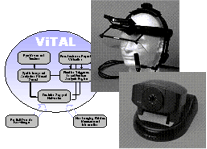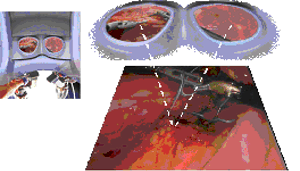Perceptual Intelligence
Although computerised decision support has been increasingly applied to assist diagnosis in medical imaging, to data there has been no generic way of designing such systems. Each application is treated as a new problem, and requires extensive interaction between radiologists and computer scientists in order to identify characteristic visual features. The process is hampered by the fact that visual features are difficult to describe and assimilation of near-subliminal information is cryptic. These drawbacks call for the development of a general framework for a natural and systematic way of gathering knowledge from domain experts. The goal of this research is to investigate the hypothesis that information about fixation points and the dynamics of saccadic eye movement of experienced observers will prove effective in deriving a new framework for knowledge gathering in medical imaging. The proposed method does not rely on explicit listing of visual features and allows incorporation of implicit domain knowledge that is subconsciously applied but can not be easily elaborated using conventional approaches. By approaching the problem from how visual search is carried out by experienced observers, it will also open new possibilities for computer based training and the development of self-learning diagnostic decision support systems.

The field of surgery is entering a time of great change, driven by recent advances in surgical/computer technology and the quest for minimising invasiveness and patient trauma during surgical procedures. Computer controlled diagnostic instruments have been used in operating rooms for many years, only recently, however, have robotic systems made their way into the operating room as dexterity-enhancing surgical assistants and surgical planners. With robotic assisted minimally invasive surgery, dexterity is enhanced by microprocessor controlled mechanical writs, allowing motion scaling for reducing gross hand movements and the performance of micro-scale tasks that are otherwise not possible. The continuing evolution of the technology including force feedback and virtual immobilization through real-time motion adaptation will permit more complex procedures such as beating heart surgeries to be carried out under a static frame-of-reference. The high degrees of freedom offered by such systems, however, also introduce problems of complex instrument control and hand-eye coordination. The purpose of this project is to investigate the use of eye gaze for simplifying, as well as enhancing, robotic control in surgery.

The aim of this research is to develop the technology required for a new generation of artificial (computer) vision systems which embody the adaptability and invariant properties of human vision. This will entail a complete re-design of existing paradigms of machine vision, beginning with a new image sensor created from photosensitive organic polymers deposited onto an analogue chip that performs adaptive spatial filtering in a manner similar to that of the human retina. Signals from the chip will be processed by parallel computer vision algorithms, designed to replicate the mechanistic processing of the human primary visual cortex, and tailored to function on irregularly sampled visual fields. Search algorithms, based on the study of human pre-attentive and goal-directed, attentive search strategies will provide medium to high-level functionality for tasks such as object-recognition and tracking, and will directly support machine learning approaches to computer vision. This technological aim will be met by assembling a truly multidisciplinary team of researchers to "reverse-engineer" human visual processing, and provide a "blueprint' for the artificial systems. A consequence of meeting the technological aim will be a more rigorous insight into the mechanisms of biological vision, and a greater understanding of visual deficiencies in human patients.